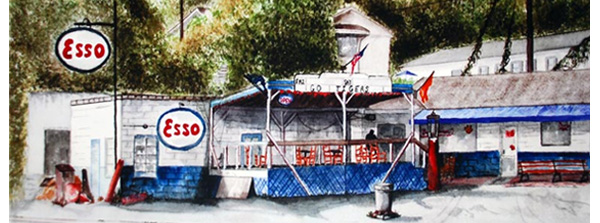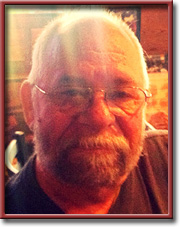William A. Balk, Sr.’s “Wartime Experiences of a Colorblind Navy Pilot—3.1”
“Us: ‘Snakeoil, this is Famous 87, do you read me?’ Snakeoil: ‘Roger, Famous, this is Snakeoil. Are you the plane with the diamond on the tail?’ Us: ‘Roger, that’s us. What can we do for you?’ Snakeoil: ‘We’re pinned down by a bunch of Japs about 50 feet in front of us. I just put out a smoke grenade in the middle of them. You should be able to see it now. How about bombing the hell out of them?’ Us: ‘I see the smoke, but 50 feet is awful close. Are you sure you want us dropping bombs that close to you?’ Snakeoil: ‘Hell, yes. We’ve been watching you work. We trust you—go ahead.’ Us: ‘Give me a marker so I’ll know for sure where you are.’ Snakeoil: ‘Roger, wilco.’”—By William A. Balk, Sr.
Dispatches from The Esso Club
By Ted Balk
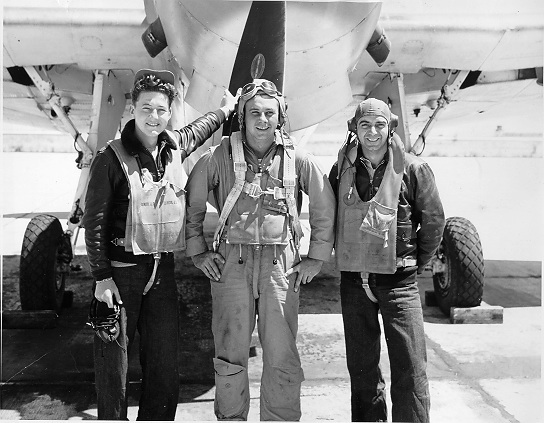
CENTRAL South Carolina—(Weekly Hubris)—5/26/2014—
CHAPTER II
Invasion of Palau
We were judged ready and fit for the invasion of Palau after our dress rehearsal on Guadalcanal with the Marine landing forces. Our first combat assignment was to provide air cover for the invasion task force as it proceeded to Palau and then close air support during the initial landing and early occupation of these islands. The Palaus are a small group of islands, historically Japanese, located about 500 miles east of the Philippines. This invasion was one step in Admiral Nimitz’s island-hopping campaign to reach Japan by leap-frogging islands instead of General McArthur’s island-by-island approach. The strategic importance of the Palaus was to provide a staging base for the invasion of the Philippines, which was scheduled for October 1944.
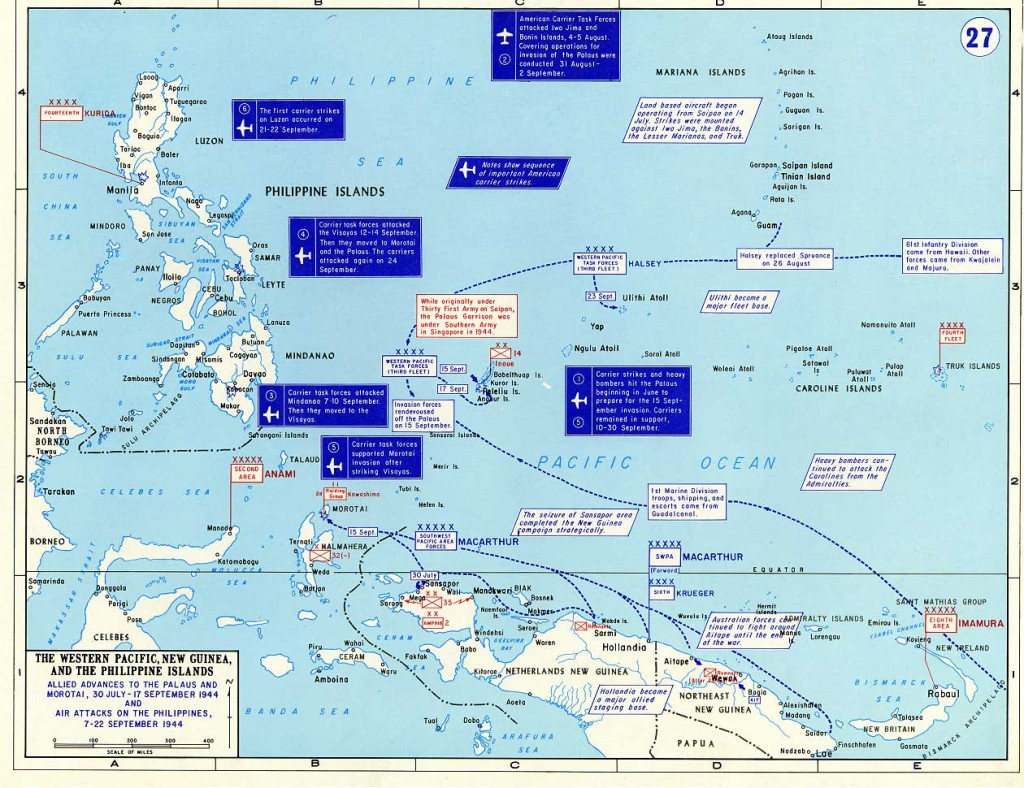
The invasion task force for Operation Stalemate II was finally assembled and sailed from Tulagi in early September 1944. The fire support group for the invasion consisted of five battleships, five heavy cruisers, three light cruisers and 14 destroyers. Air support was provided by eleven escort carriers, CVEs, and about the same number of escort destroyers, DEs. The CVEs and their DE screen were further divided into two groups; CarDiv 26 under Rear Admiral Ralph Ofstie and CarDiv 27, our division, under Rear Admiral William Sample. The remainder of the task force consisted of tankers, personnel ships, supply ships and various types of landing craft. The speed of the convoy was governed by the fastest speed of the slowest ship. For some of the landing craft this was probably under 10 knots.
After a day or two the activities of the squadron became pretty much routine. We kept ASP and CAP planes in the air beginning an hour before sunrise and continuing until well after sundown. Most of the guys despised the early morning flights, but I enjoyed them immensely. It was an awe-inspiring experience to see the sun come up over the Pacific while flying at 5,000 feet, with huge cumulus clouds all around and no evidence of humanity anywhere—only water. These flights usually lasted about four hours; then they’d turn the ships into the wind to launch our relief and take us aboard.
The purpose of the antisub patrol was to hold Japanese submarine activity to a minimum. The area around the convoy was divided into sectors so that each plane would cover an arc extending out about 200 miles from the center of the convoy. We depended on the plane’s radar and our radioman as the primary means of detection, so this meant the radioman had to stay on his toes. The turret gunner was responsible for scanning the skies behind and above the plane in the unlikely event that a Jap fighter plane would show up. By this time in this area, Admirals Halsey and Spruance1 and their fast carrier groups had all but eliminated the threat of air attack, so we felt pretty comfortable from that standpoint. The pilot was responsible for visual observation of the ocean and for navigation.
Back at Pensacola, we’d been thoroughly trained in all forms of navigation including celestial, radio, dead reckoning, and probably others, but for this we depended on dead reckoning.2 The fact that we could accurately estimate wind direction and velocity by observing the surface of the sea made navigation easy. I think I’m the only one in our squadron who ever actually got lost, and I’ll explain how that happened later on. Occasionally, we’d get a contact on the radar and would investigate but, if it was a sub, they could pick us up on their radar at least as soon as we got them and would immediately dive. This also was true for American subs because in that situation all submarines became fair game.
This is another aspect of “friendly” fire, which, regrettably, seems to be an inherent part of warfare. We carried a lethal load of depth charges, but to do any real damage we would have to catch them while some part of the U-boat was still visible. In any case, as long as we could keep the Jap subs submerged, we had completed our mission. Their underwater speed was so slow that they couldn’t keep up with the convoy and, therefore, could only cause trouble if they were directly in its path.
In re-reading Loose Ends,3 I was reminded that the Palau mission was a first for CVEs. Prior to the invasion of the Palaus, the small carriers had only been used to provide air cover for convoys, both in the Atlantic and Pacific. This time, we were to provide direct air support for the actual invasion. This meant bombing and strafing designated targets prior to “D” day, assaulting the landing beaches as the landing craft made their way in, then continuing close air support for the ground troops as they worked their way inland. We maintained this coverage for about two weeks until they had an airstrip secure enough to bring in Marine F4U Corsairs and their own TBMs.

The Palaus consist of a series of small islands stretching in a north-south line for about 100 miles. Starting at the north the four main islands are Babelthuap, Koror (with the town of Koror as the capital), Peleliu, and Anguar. There were numerous other unnamed small islands. The plan of operations was to put the Marines ashore on the West Coast of Peleliu; then, after they were firmly established, to put an Army division ashore on the south end of Anguar. Since we had been training for over a year for just this type of mission, everything went off without a hitch, from our standpoint. We found that we could work well with the Marines but had some difficulty in establishing a close rapport with the Army.4
On “D” day, the TBMs were used to provide bombing, strafing, and rocket attacks on the beachhead as the landing craft approached. We had two .50-caliber machine guns in the wings, eight 5-inch high-explosive rockets under the wings, and could carry a choice of either twelve 100-pound bombs, six 250-pounders, or four 500-pound anti-personnel or armor-piercing bombs. We could also carry four depth charges (which did double duty as anti-personnel bombs when detonated at ground level) and one 2,000-pound aerial torpedo, which was only good for attacking ships.
The FM2 Wildcat fighter, which was an integral part of VC (composite) squadrons, was an improved version of the F4F Wildcat that the Navy had at the start of the war. It was highly maneuverable but lacked speed and rate of climb in comparison to the Hellcat or the Japanese Zero. It fit in well with the CVE (escort carrier) operations because of its short take off and landing requirements and its small size. The Wildcats normally did not carry any bombs and, during an invasion, were used mainly for strafing. I think they had either four or six .50-caliber wing guns.
For this “D” day mission, our fighters were rigged to carry napalm bombs to be used in softening up the beachhead. We were told that this was the first time these incendiary devices were to be used, and I don’t know how well they worked. I assumed that due to their size and shape they couldn’t be installed in the bomb bay of a TBM, so they had to be hung under the wings of the FM2s. I know the planes had to come in low and slow to the drop zone but, luckily, none was hit by anti-aircraft fire over the drop zone.
For the invasion, one of the offshore ships was designated as the command center for the operation. They were responsible for coordinating all operations involved in the actual process of getting the troops ashore with a minimum of casualties. The planes orbited overhead, available to the beachhead, and awaited directions from the coordinating commander. He alternated between ship-to-shore bombardment, bombing attacks, strafing, rockets, and napalm. It didn’t seem possible that anything could live through the onslaught, but many Japanese did. There were always casualties among our troops and, in this invasion, they became very severe while the beachhead was being established, and long after.5
While this was taking place, we maintained the regular CAP and ASP for the area. We also sent out longer search patrols—about 250 miles—just in case some Japs had managed to slip by Halsey and his Third Fleet and might be headed our way. Another innovation here was the use of Marine and Army personnel to ride with us as observers and to help coordinate the use of our firepower in solving problems encountered by the ground troops. This worked really well with the Marines, but the Army didn’t have much trust in us. An example of the kind of rapport we had with the Marines is obvious from this radio dialogue, as I recall it, on one occasion:
Ground Coordinator: “Famous 87, this is Hardnose. What kind of ammo are you carrying?”
Us: “Eight H-E rockets and twelve 100-pound GP bombs.”
Hardnose: “I have a job for you. I have a platoon pinned down in sector B8. Contact them on Frequency 4 and see what you can do. Their code name is Snakeoil.”
Us: “Roger, wilco.”
In order to transmit and receive their frequency, Edinger had to make adjustments to our radio equipment. The instant I concluded the conversation with ground control, Edinger reported on the intercom that he had already made the adjustments. It was ready to go.
Us: “Snakeoil, this is Famous 87, do you read me?”
Snakeoil: “Roger, Famous, this is Snakeoil. Are you the plane with the diamond on the tail?”
Us: “Roger, that’s us. What can we do for you?”
Snakeoil: “We’re pinned down by a bunch of Japs about 50 feet in front of us. I just put out a smoke grenade in the middle of them. You should be able to see it now. How about bombing the hell out of them?”
Us: “I see the smoke, but 50 feet is awful close. Are you sure you want us dropping bombs that close to you?”
Snakeoil: “Hell, yes. We’ve been watching you work. We trust you—go ahead.”
Us: “Give me a marker so I’ll know for sure where you are.”
Snakeoil: “Roger, wilco.”
At that, some kid jumped out of a hole in the ground and laid out a fluorescent panel, then jumped back in the hole before the Japs got a good shot at him. This is the first time we had been able to see any life in the area at all.
Us: “Snakeoil, we see you. Here we come.”
We made a low angle bombing run and released a couple of 100-pounders, then pulled up to see what happened. About 30 or 40 Marines suddenly appeared, made a quick charge, threw a bunch of grenades, tommy-gunned down anybody that moved, then got back on the radio.
Snakeoil: “Many thanks. We got ‘em. Good work.”
Being able to do this kind of work goes back to the many months of training we had back in The States. We practiced “glide” bombing attacks with water bombs for hours on end. The squadron average was 65 percent hits in a 50-foot circle; some individuals obviously had a much higher average. The Marines quickly realized that we had this capability and capitalized on it. The Army never did.
I truly enjoyed flying the Marine and Army observers and tried to get scheduled for them whenever possible. The usual procedure on these flights was to report in to the ground-air coordinator and wait for instructions for specific targets. In the meantime, we flew at treetop level or lower, looking for targets of opportunity.
Once, on Peleliu, Al Pagnota, our turret gunner, spotted what we thought was a supply dump with material stacked in a large pile, camouflaged, but in the open. We reported it to the coordinator, and then, at the end of our duty time, requested permission to strafe it with the idea of setting it on fire. We got permission and, on the first run, got it burning. I decide to make a second pass to encourage the flame but, just as I got back to the pile, the whole thing blew up. Instead of food, it was ammo. Jim Edinger, riding in the radio compartment, insists that the blast lifted the plane about 50 feet. I have no idea why the explosion did not knock us out of the air, but it didn’t and also did no significant damage to the plane. Back at the carrier, the maintenance crew chief found a piece of shrapnel lodged between two cylinders in the engine, but there was no real damage.
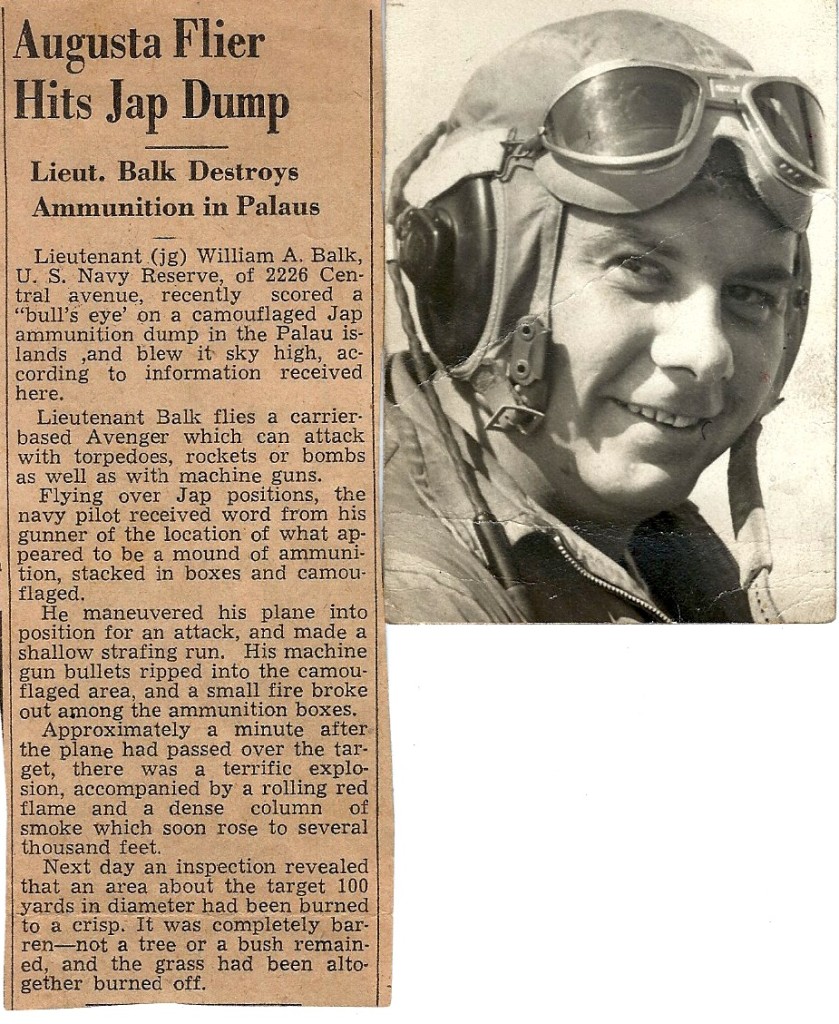
To be continued . . . .

End Notes Chapter II
1. Spruance and Halsey
Admiral William F. “Bull” Halsey, Jr. was commander of the Third Fleet and Admiral Raymond A. Spruance was commander of the Fifth Fleet; however, these two fleets were essentially one and the same. When Halsey was in command, it was the Third Fleet and, when Spruance was in command, it was the Fifth. Regardless of what its designation at the time happened to be, this vast collection of fighting vessels was made up mostly of new carriers, battleships, cruisers, and destroyers that had been built after Pearl Harbor. It was commonly referred to as “the fast carrier task force.” Prior to the invasion of Palau, this group had operated as the Fifth Fleet under Admiral Spruance. During his tenure, the islands of Tarawa, Kwajalein, Eniwetok, Saipan, Tinian, Guam and others were retaken from the Japanese.
On August 24, 1944, command of this armada was rotated to Admiral Halsey who, with his staff, had spent the previous several months developing strategy and tactics to bring about an end to Japanese aggressive ambitions as rapidly as possible.
2. Dead Reckoning
In navigation over large stretches of open water with no stationary landmarks available, competency in dead reckoning was essential for survival. Although we had a homing device available on each carrier, this was relied upon only as a last resort. In plotting a course between two points, we first determined the longitude and latitude for each point and the direction of the line between them relative to true north. For example, if Point B was southeast of Point A, the angle of the line between them was 135o from true north. This established our base course. But since we used a magnetic compass to determine our heading, we had to correct for the magnetic deviation which occurred in that particular part of the world. Charts were available to establish this.
The next consideration was to determine the effect of wind velocity and direction on our projected course. This information was available from the ship’s navigator prior to take-off, but we had to constantly update it as wind changes occurred during the course of a flight. It didn’t take long to learn how to judge the wind direction and velocity by observing surface conditions of the sea. If there was no wind, the sea would appear dead calm. As wind velocity increased, the number and size of waves increased, and the direction of wave movement indicated wind direction. As the wind velocity continued to increase, white caps began to appear and streaks on the surface became apparent. It was easy to learn the Beaufort Scale, which translated these observations into knots, which could then be used mathematically to alter our heading and airspeed so as to arrive at Point B at the planned arrival time. A nautical mile is defined as the length of one minute of arc of a great circle (Earth’s surface). This translates into 6,076 feet as compared to 5,280 feet for a statute mile.
Another complication involved the fact that our home base was never where we left it. To compensate for that, the ship’s navigator gave us an estimate of his proposed base course and speed and a promise that they would try to stay within visual contact of that. This usually worked out all right, even though the navigator never knew for sure what some Admiral up the line might decide to do. It didn’t take long to develop an instinct for locating them on our return regardless of where they were. With as much flying as we were doing, navigation soon became a natural function of everyday living, and we seldom put any serious effort into it. We just did it and it usually worked out, but we were always conscious of the fact that our survival depended on getting it right.
3. Loose Ends
Loose Ends refers to the squadron journal that was put together by Patton, Shackett, Dandridge, and Burgess during the long month of our voyage back to The States. Jack Patton was one of our torpedo pilots and always considered himself as sort of artistic. For example, he ran the contest among all the crew to decide what our squadron emblem would be. They decided on Bugs Bunny, and he took their ideas to Loony Tunes Studio in Hollywood and got them to work up the design. Louie Shackett and Patton were close friends, so it was natural for him to be involved. More than that, Louie had a wonderful sense of humor that contributed greatly to the Saga of VC 21. Pat Burgess, our Administrative Officer, had been a newspaper man in civilian life and Ed Dandridge, our Intelligence Officer, provided just that, a shot of intelligence here and there in the journal.
4. Compatibility with Army Units
It should come as no surprise that the Navy can communicate better with the Marines than with the Army. The Marine Corps is an integral part of the Navy, whereas the Army is a separate service entirely. Upon graduating from flight training at Pensacola or Corpus Christi, all Naval Aviation Cadets were allowed to choose between the Marine Corps and the Navy for their commissions. I’m sure that the Marine pilots who moved onto the island and lived with the troops after the landing strip was secured had a much closer rapport with the Marine infantry than we did.
5. Japanese Defense Tactics
The lack of anti-aircraft fire at the beachhead on Peleliu was the result of a new tactic adopted by the Japanese. The original doctrine, used in previous Pacific island fighting, called for an all-out defense of the beaches to defeat an amphibious landing; the effectiveness of the tremendous American pre-invasion bombardments had consistently rendered this tactic unsuccessful. Under the new doctrine, the Japanese defenders preserved most of their strength to fight from dug-in positions away from the bombardment area. They withheld their anti-aircraft fire to keep from disclosing their defense positions.
